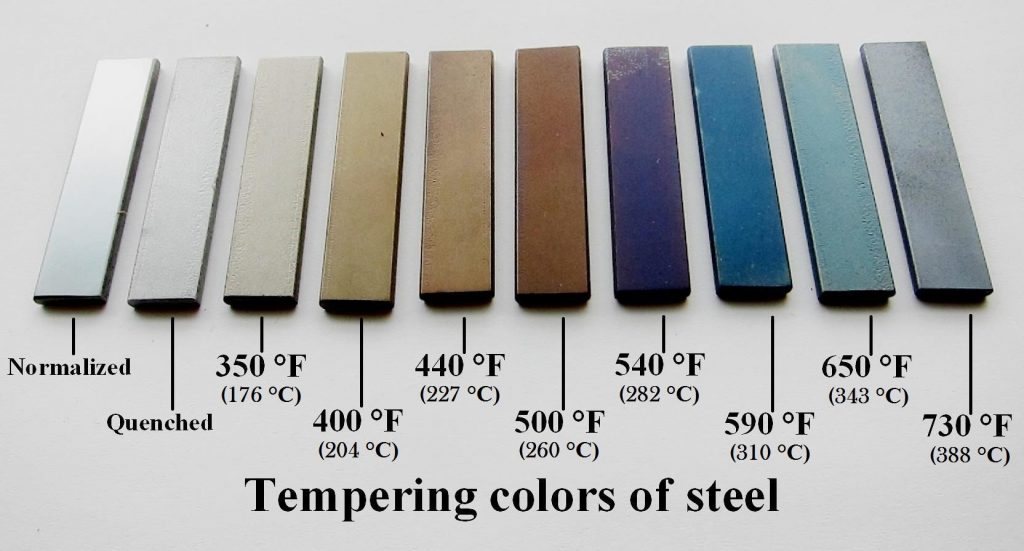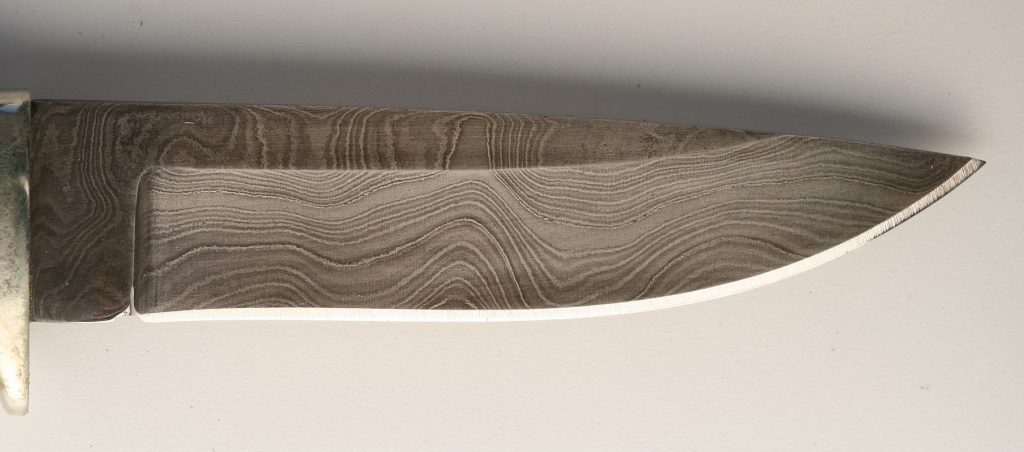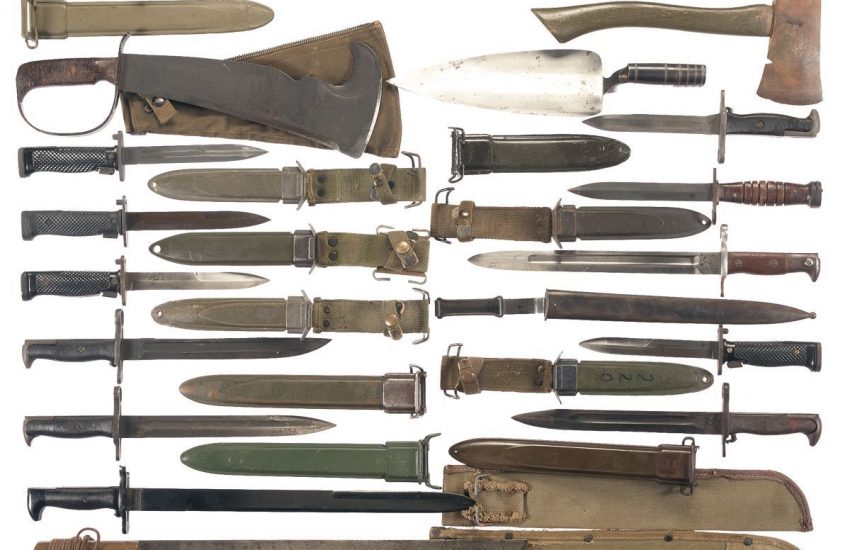The steel, which is obtained from the processing of iron ore is one of the oldest metals that human beings have begun to manufacture and use. The most amazing feature of steel is its flexibility. By “flexibility” I mean both the physical flexibility of the metal and the flexibility that arises from the diversity of its application areas. Today, hundreds of different types of steels are used, ranging from simple kitchen tools like cutlery to giant skyscrapers, bridges that connect cities or even continents. Let’s talk about this a little bit, what are the features of the hunting knives, the survival knives and the steel used in the machetes and their characteristics.
Basic properties of the steel include flexibility, ductility, tensile strength, hardness, compressive strength, and brittleness. It is useful to explain the place as it comes to our language (Turkish), which is expressed as stiffness, in international metallurgy, two separate words “toughness” and “hardness” are expressed and they are separate characteristics. In addition to these, there are properties such as electrical conductivity, magnetism and thermal conductivity; But they will not be mentioned in this article, as they are not sought after on knives, hunting knives and survival knives.
The entire steel industry is trying to maximize the required and desired properties of the steel. However, some features of the steel are interdependent and proportional. For example; As the hardness of a steel type increases, the brittleness may increase, or the compressive resistance may decrease as the ductility of the steel increases.
The most basic way to convert iron ore to steel is to first heat it with a reducing agent such as coal, carbon or coking coal. This process is called smelting or casting or melting in native mining. Then the steel is forged and the unwanted materials are expelled. During this phase, the steel is given the desired shape. After the casting, the steel is hardened and then it is annealed (tempering, tempering).


The amazing fact about steel is that if you change even the smallest parameter in one of these processes, the properties of the manufactured steel will differ greatly. It is important either if the steel was cooled down on its own, quenched in mieral or oily water; or even the type of bricks that are used in the furnace will affect the properties of the final product. That is also the reason why as a nation that has been processing steel for more than a millenia, we don’t have any World-wide brands or industry-wide steel types although these lands we live in is the birth place of many sword, machete and knife designs. Even if a smith finds the desirable steel, details of his craft are lost when he dies or retires. Our steel and knife craftmanship has failed in recording every phase of these manufacturing processes in detail.
In contrast to us, foreign companies, even smiths that manufacture in small scales, have gradually documented all the methods they have used or tried and their results. Thus they have succeeded in producing steel with the same features and same quality each time. So the people who use those knows if they can or cannot depend on the product, what they can or cannot whitstand. That is crucial to know how far will your machete or knife get you in a survival situation. Knowing how much abuse your gear can handle is undeniably critical.
The main types of steel used in hunting knives, swords and survival knives are as follows:
10XX series steels:
The last two numbers of these steels, which are called the thousand or ten series, vary according to the carbon content in the steel. They are not considered to be stainless or alloy steels. They are referred to as carbon steels. If their carbon content is higher than a certain level they are called high carbon steels. Some of these steels are 1050, 1060, 1070, 1084 and 1095 steels. They are very cheap, common, easily found steel types. Quite durable, and the blades produced from these steels hold an edge quite well and easy to sharpen. They are not considered “stainless steel”, but can be used for many years without rusting if the cleaning oiling and storage are done properly.
If steel is 1095, the carbon content will be between 0.90% and 1.03%. Since the ideal is 0.95%, the steels between these values are considered to be 1095 steel. In the same way, 1050 steel with the lowest carbon content will be 0.50% carbon on average.
As the carbon content increases, the hardness of the steel increases, but also the brittleness increases. A blade made of high-brittle steel will also tend to chipping. Chipping is possible even during sharpening if a coarse grit sharpening stone is used.
When the carbon content falls, the steel will be “softer”. Carbon-rich steels are used in smaller-type hunting knives, while liwer carbon steels are used in long-blade knives that requires elasticity, vibration and impact resistance, such as machetes.
400 Series Steel
There are 410, 416, 420 and 440 varieties of these steels. Most common among these steels is 440 steel. The 440 steel has 440A, 440B steel and 440C varieties. 440C steel was known as the Ferrari of the steel industry in 1980s.
Considered a high-standard steel, 440C is stainless, easy to sharpen and very flexible in regard of application fields. It is not very brittle, considering the hardness levels it can achieve. It can be used in a wide range of hand axes, hunting knives, folding knives to machetes and provides high performance. Amongst 440 series steels, the highest standard is the 440C type steel. The 440C steel can harden to levels of 60, 61 on the Rockwell scale after careful annealing and quenching and still maintains its flexibility at a certain level. For this reason, it has been used in many areas, where the other stainless steels couldn’t be used. For many years, maintaining the title of “the best stainless steel ever”. But the other varieties of the 440 steel do not show these superior features.
for many years, many areas where hardened steels, especially stainless steels, can not be used have been used and retained the title of being one of the strongest among the steels classified as “stainless” for many years. But the other varieties of the 440 steel do not show these superior features.
If the product you buy is only 440 stamped, this steel is probably 440A or 440B, which are the cheaper and unqualified types of 440 steel. If you are getting a knife, hunting knife, camping knife or knife made of steel from the 440 series, be sure to look for the 440C stamp on it.
Crucible CPM S30V Steel
The S30V is a steel type developed by an American metallurgical firm called Crucible. Among the very high-end steels, the unit cost of the S30V is so high that it directly affects the price of the knives it is used in.
The Knife Company, Buck Knives, refers to this metal as the best knife steel available. Apart from this company, almost all knife companies agree that this steel is very high quality.
One of the reasons for the superior quality of the S30V steel is that it’s a martenistic steel. In other words, by tempering with the crystal structure of the steel in molecular level, present properties are obtained. Many companies and knife designers, agree on this very fine grain steel has the best combination of edge holding, toughness, hardness, flexibility protperties that are sought in knife blades.
It is used in short barrel blades, which require high durability, especially in tactical blades, hunting knives and survival – bushcraft blades, due to their technical features. This stainless steel, which is very resistant to rusting, has high hardness, such as 59, 61 on the Rockwell scale.

A2 Tool Steel
A2 type steel, fairly solid; but it is an average steel type. The blades made from this steel will probably be cheap, you will see your work as well as possible, but it will not be very durable. Blades made of tool steel A2 are relatively easy to bend at the same time and will often need to be sharpened as they don’t hold an edge well.
O1 Tool Steel
It’s a kind of steel that is called “alloy steel”. It is also called tool steel because it is used in the construction of other metal tools that is used to work on other tools. The blades made with this steel are difficult to bend, easy to sharpen and holds an edge well. Custom knife makers often prefer this because of its price – performance ratio and durability.
D2 Steel
D2 type steel is not as hard as stainless steel, though it is harder than most carbon steels. In terms of features such as toughness, hardness, brittleness and edge-holding, it is close to O1 steel.
5160 Spring Steel
Also known as spring or helix steel, 5160 steel is a type of steel used in making leaf springs and spirals as the name suggests. It is a steel type that is flexible, resistant to rust, hard to blend and easy to sharpen. Due to these features it is used in large or long blade knives such as machetes.
65mn Steel
65mn steel, which is known as high resistance, high carbon spring steel, is a type of steel that emerges in Chinese steel industry. In some circles it is assumed to be the equivalent of 1065 steel, while some environments are put it somewhere between O1 and 5160 type steels.
Despite the fact that features can compete with more expensive steels, it is relatively cheap. For this reason, it is becoming widespread both among manufacturers of knives and tools as well as other industries using steel. Some large knife manufacturers have also begun to try this steel in various models. If it is annealed properly, it can reach up to high hardnesses such as C 55-61 in the Rockwell scale.

4116 Krupp Steel (German Steel)
4116 Krupp steel is a type of steel developed by the German Krupp company, which is also the producer of famous Mauser rifles.(The bolt action rifles that the German infantry used in World War II) Today, this company, operating under the name TyhsenKrupp, produces 4116 steel, which is a very fine grain steel. The surface of the blades made from this steel usually have a shiny surface.
4116 steel is used in the construction of medical equipment, food processing machinery or kitchen utensils. Obviously because of its very high corrosion resistance. It is a pretty solid steel type and holds a good edge.
Real cutting tests have shown that the 4116 Krupp steel or, as it is called in Turkey, the German steel can be sharper than the 440 and 420 series steels, and that it makes it to get it dull.
M390 Steel
The M390 steel is a steel grade produced by a new company named Bohler-Uddeholm, which is a combination of two knife makers, Austrian Bohler and Swedish Uddeholm. This steel, which is a third generation steel, is produced by a method called powder metallurgy.
M390 steel is called a space age steel due to its properties and production methods. It is stainless and has a very high resistance to corrosion. Blades that are made with this steel holds a very good edge but sharpened relatively hard. The hardness grade is quite high. It can reach 60, 62 HRC in the Rockwell scale. It’s a highly priced steel, so it directly affects the price of knives that it is made with and thus usually preferred in short blade knives.
It contains chromium, molybdenum, vanadium and tungsten. Chromium and vanadium that are used to make the M390 steel, are also used in rifle barrels, heavy-duty tools. Tungsten is also used to produce armor piercing tank ammo and anti-aircraft gun ammo. Considering the areas of use and the ingredients in it, it is obvious why it is called space age alloy or space age metal.
M390 is one of the very fine grain steels. (Steel can get shinier as it is produced finer grain.) The inventor of this steel claims that it can get as shiny as a regular mirror. It’s a very high quality steel but also very expensive. Thus, knives made with this steel are usually expensive.
12C27 Çelik (Sandvik Çeliği)
The 12C27 steel is one of the Sandvik Series steels. Also known as the Swedish steel. However, since there are many types of steels referred to as with the same name, this is not a distinguishing definition.
Also called razor steel, 12C27 steel, is a very fine grain stainless steel. The blades produced from this steel are usually clear and shiny. The Morakniv brand uses this steel in some blades called Mora.
Blades made of 12C27 steel usually hold a good edge. Although it is a bit hard to sharpen usually easier than other steels with the same hardness level. According to the methods used in tempering and quenching, the hardness grade may be between 54 and 61 HRC according to Rockwell scale.
It has a very wide range of hardness, thus suitable to use in many kinds of blades, including machetes, but it is usually preferred in short blade knives.
Damascus Steel

Damascus steel is a type of alloy steel obtained by mixing different properties and alloys of the structures together and then exposing it to acid or another abrasive. Because of the combination of at least two different metal alloys, wood-like patterns emerge after the grinding process.
Damascus steel is a legendary steel that is manufactured by mixing different types of alloys or steels together and the exposing it to acid or another abrasive. Because of the combination of at least two different metal alloys, wood-like patterns emerge after the abrasion process. Thought to have originated in India, it is not known how the original Damascus steel was manufactured. But today companies invent their own ways to obtain the same look and properties of it.
It is alleged that Damascus steel is very hard and tough and holds a super keen edge. There are myths that it can cut through a rifle barrel, metal armor or even a hair that falls on its edge. But research on Damascus steel blades, which are obtained from historic sites or relics, showed that this steel couldn’t have had the aforementioned properties. Although, apparently ahead of its time, the original Damascus steel seems to be inferior in comparison even to a mediocre modern day steel. But considering this steel emerged around 300 B.C. experts are impressed by its properties.
Other Steel Types
304 Stainless Steel
304 stainless steel is also known as A2 stainless steel. However, we are not referring to . However we are not referring to the aforementioned A2 tool steel. Almost all of the steel types mentioned above are steel grades classified according to AISI (American Iron and Steel Institute) standards; but 304 stainless steel is classified according to SAE (Association of Society of Automotive Engineers – Society of Automotive Engineers) standards. As an alloy steel, 304 stainless steel’s most striking feature is that it is extremely resistant to corrosion. It’s not a good conductor when it comes to heat and electricity and have weak ferromagnetic properties. Due to its extreme resistance to corrosion, it is used in kitchen utensils, food containers, screws, machinery parts, exhaust pipes.
4140 Steel (41 Series Steel 41XX Steel)
All of the 41 series steels are alloy steels, including 4140 steel. It’s a steel type classified according to SAE standards. Although it has a very high strength to weight ratio, it is very hard to weld it. If preheating and post-cooling before and after the welding processes are not done properly it may have micro fractures which will reduce its strength significantly. 41 series steels, including 4140 steel can reach up to 90-100 HRC, which is impressively high. It is not considered a stainless steel.
4140, 4130 and 4145 are used in bicycle frames, airplane fuselage, pipes, pressurized containers, clutch components, gears and roll cages due to its very high tensile and compressive strength compared to its weight.
Sources: Wikipedia: List of Blade Materials Wikipedia: SAE Steel Grades Wikipedia: Stainless Steel Wikipedia: Steel Knife Center Knife Informer Gear Junkie ZKnives

